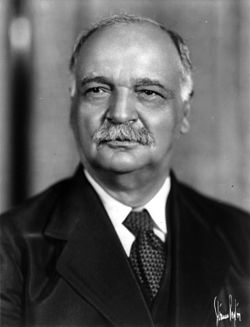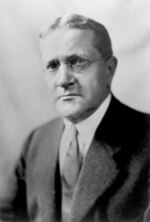| 71st United States Congress | |
|---|---|
70th ← → 72nd | |
 United States Capitol (1906) | |
March 4, 1929 – March 4, 1931 | |
| Members | 96 senators 435 representatives 5 non-voting delegates |
| Senate majority | Republican |
| Senate President | Charles Curtis (R) |
| House majority | Republican |
| House Speaker | Nicholas Longworth (R) |
| Sessions | |
| Special [a] : March 4, 1929 – March 5, 1929 1st: April 15, 1929 – November 22, 1929 2nd: December 2, 1929 – July 3, 1930 Special [b] : July 7, 1930 – July 21, 1930 3rd: December 1, 1930 – March 3, 1931 | |
The 71st United States Congress was a meeting of the legislature of the United States federal government, consisting of the United States Senate and the United States House of Representatives. It met in Washington, D.C. from March 4, 1929, to March 4, 1931, during the first two years of Herbert Hoover's presidency. The apportionment of seats in the House of Representatives was based on the 1910 United States census.
Contents
- Major events
- Major legislation
- Party summary
- Senate
- House of Representatives
- Leadership
- Senate 2
- House of Representatives 2
- Members
- Senate 3
- House of Representatives 3
- Changes in membership
- Senate 4
- House of Representatives 4
- Committees
- Senate 5
- House of Representatives 5
- Joint committees
- Caucuses
- Officers
- Legislative branch agency directors
- Senate 6
- House of Representatives 6
- See also
- Notes
- References
- External links
Both the House and Senate remained under Republican control, with increased majorities in each chamber. And with Herbert Hoover being sworn in as president on March 4, 1929, the Republicans maintained an overall federal government trifecta. [1] [2]
The 71st Congress also featured the most special elections of any Congress with 27 in all.








